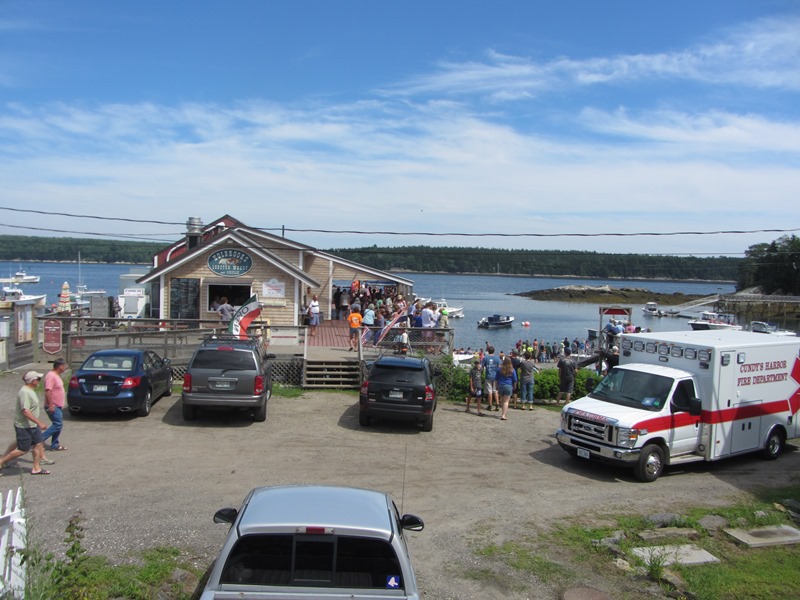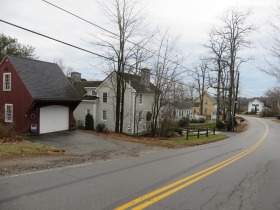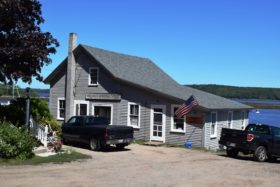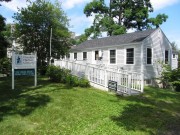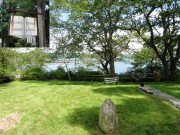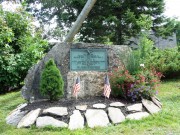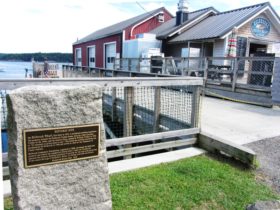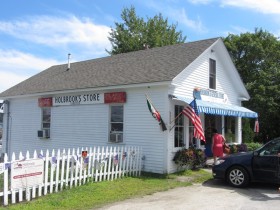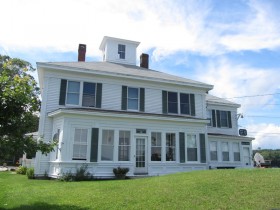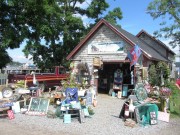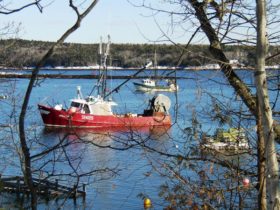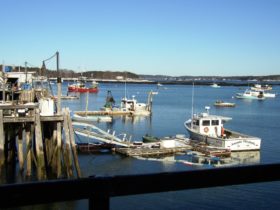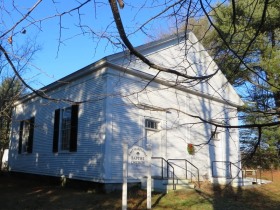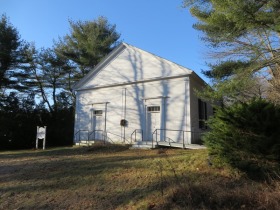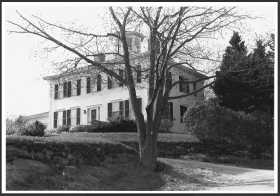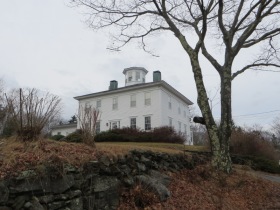Cundys Harbor is a village within the town of Harpswell, in the area known as East Harpswell. It is located in the southeastern portion of this sprawling coastal town, on Sebascodegan Island. In 1985 the Maine Historic Preservation Commission described it thus:
“Cundy’s Harbor is a small fishing village on a narrow peninsula of hilly terrain sandwiched between Ridley Cove and the mouth of the New Meadows River. The village consists of small wood frame buildings mostly constructed in the nineteenth century.”
Basically unchanged since 1985 and traditionally a fishing village, the Harbor is home to lobster boats and offshore fishing vessels.
Cundys Harbor, named for William Cundy who lived in the area in the early 1700s, is one of the most densely populated settlements in Harpswell, the other being Bailey Island. It has its own volunteer fire and rescue organizations, a community center, and a library.
Holbrook’s Wharf is a centerpiece of the community. The 1853 structure was the model of a working waterfront on the coast of Maine.
The Holbrook Community Foundation, formed in 2006, purchased and rehabilitated the property, through community fundraising, contributions by the Town of Harpswell, and grants from other sources. The property includes Holbrook’s General Store and the Holbrook-Trufant house.
The Wharf along with another restaurant and seasonal residents combine to make the village an active place during the summer and early fall months. It still retains an early 20th century atmosphere with vintage houses closely spaced and the usual souvenir fare.
The Harbor is not only a village, but truly a working waterfront, home to lobster boat and off-shore fishing vessels.
In addition to Bailey Island, see other Harpswell locations: Orrs Island, Harpswell Center, North Harpswell, West and South Harpswell, Eagle Island and Haskell Island.
National Register of Historic Places – Listings
East Harpswell Free Will Baptist Church
[Cundys Harbor Road East Harpswell] This modest and virtually intact Greek Revival style frame building was built in 1843. The overall form and detailing resembles many Maine churches of the period, but this example has statewide significance because of its intact and now rare reverse interior plan. The church illustrates a non-conformist expression of religious beliefs along with its architectural significance.
In 1817 residents of Sebascodegan Island who had long worshiped at the 1765 Island Meeting House organized the Free Will Baptist Church and Society. It was not until 1843 that the parcel of land was acquired. The new church was built a few months later.
Between 1840 and the Civil War the society had its greatest period of growth but it got competition in 1864 by the newly formed First Christian Church in Cundys Harbor. The First Christians built a separate house of worship in 1877.
By the early 20th century the Free Will Baptist congregation was in steep decline. Services were discontinued, then revived in the 1930s when attempts to restore the building were made. The project was taken up by the Sebascodegan Island Garden Club in the 1960s. In 2015 the Harpswell Garden Club and the Harpswell Historical Society manage its use with occasional religious and community activities.*
Union Hotel
[Cundys Harbor Road Cundys Harbor] The Union Hotel, the largest structure in the area, occupies the highest point of land and dominates the skyline. Wood with clapboard siding, the building is two stories with a hipped roof topped by an octagonal cupola.
The building has undergone many alterations but is historically significant as the oldest known surviving coastal resort hotel building in Maine. It is an early example of the development of coastal resort communities. It is an important survivor of an extremely important aspect of the state’s history.
Early hotels in Harpswell included two at Potts Point: the Mansion House (built 1835, burned 1868) and the Seaside Hotel built 1863; burned 1866). Cundys Harbor had blossomed as a fishing village in the 1850s. Daniel Weeks Simpson, son-in-law of early resident Robert Watson, built the Union Hotel in 1862.
The hotel failed after a year and the lower story of the building was used as a church and a school for a few years before it continued as a hotel, undergoing periodic remodeling and various name changes, until the 1940s when it was converted to a private residence.*
* See Additional resources in Harpswell.



